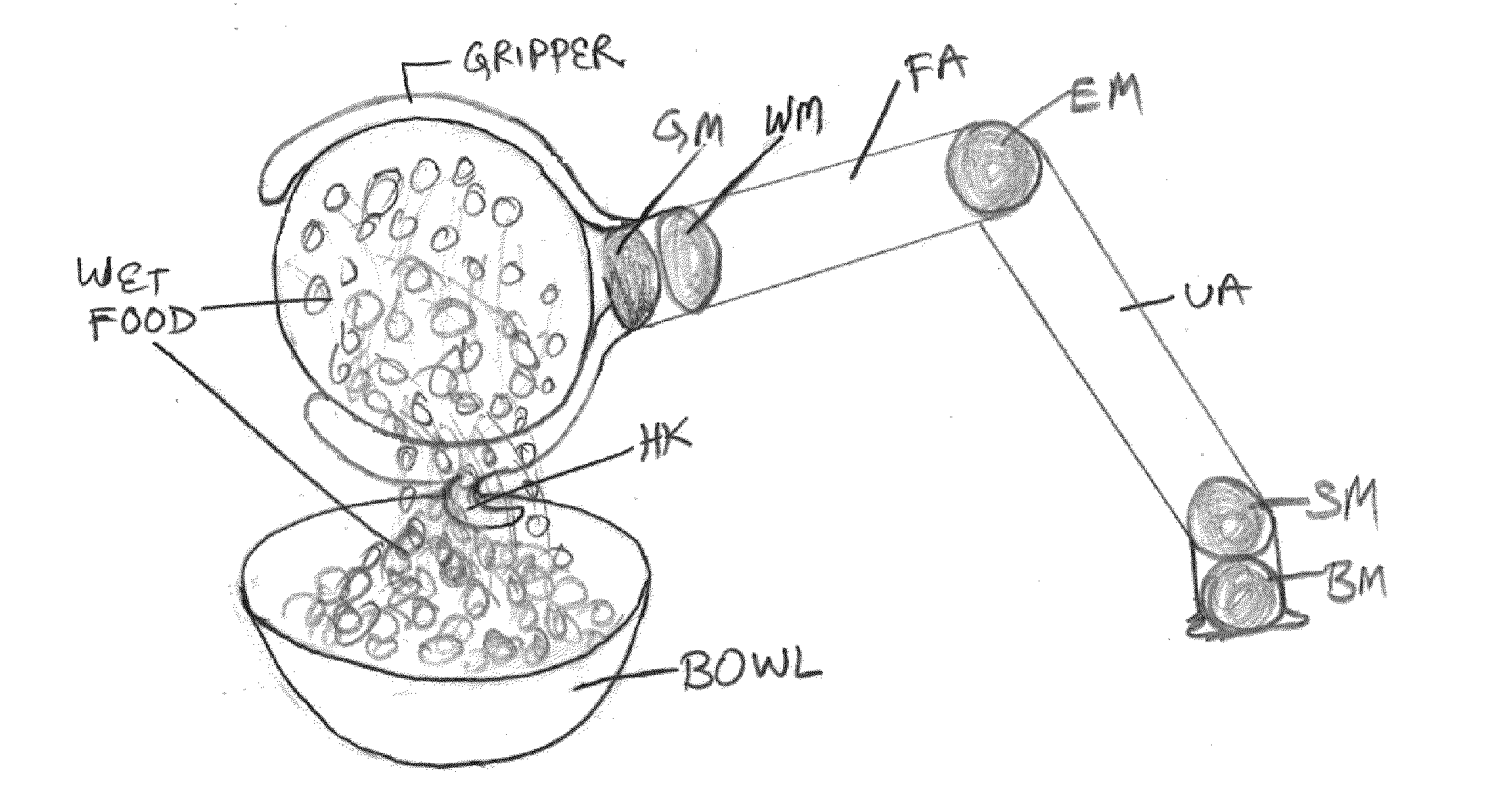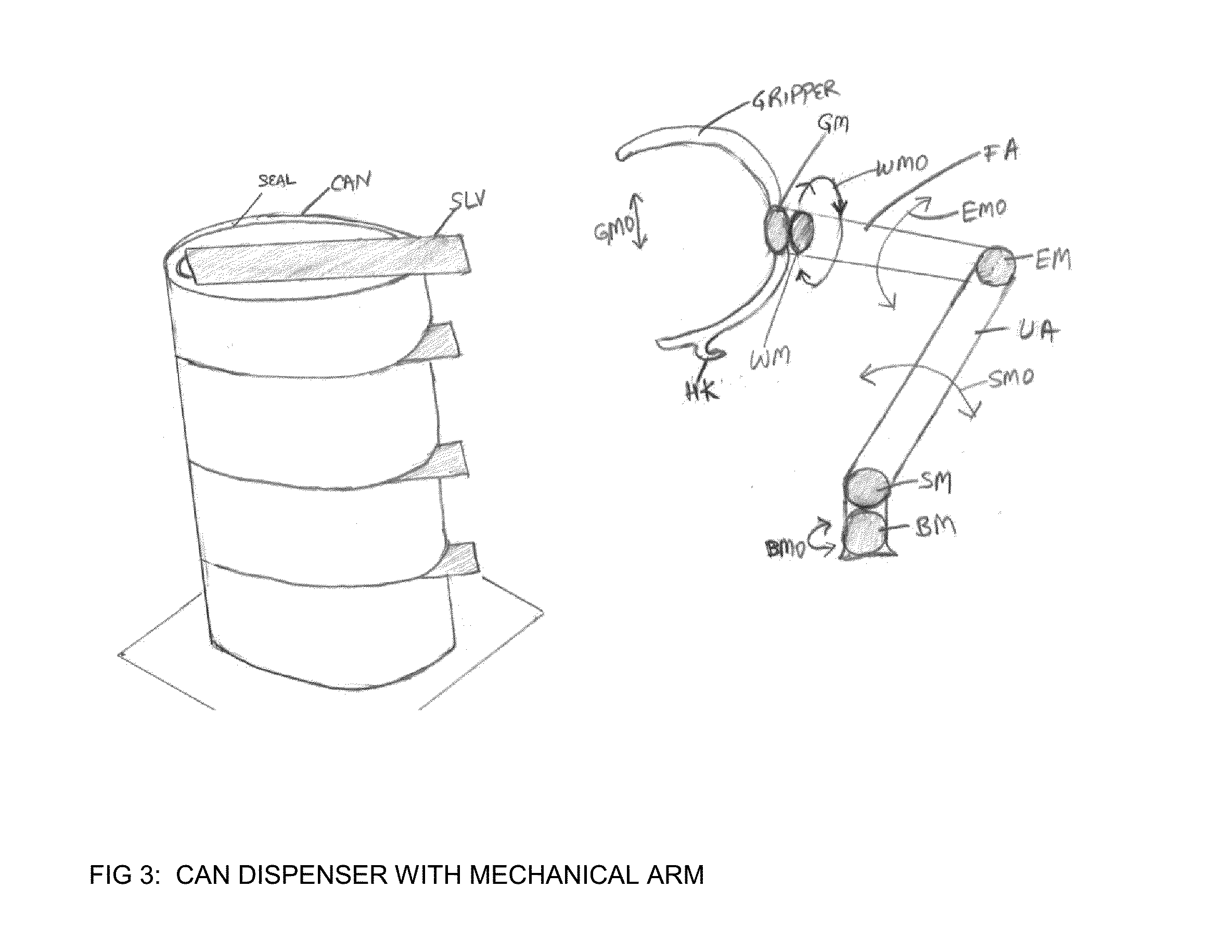Pop-Top Can Food Dispenser Robot
a robot and food dispenser technology, applied in the field of automatic pet food dispensers, can solve the problems of dehydration of pets, easy infection of bacteria in exposed wet food, and the majority of inventions on the market work well only for dispensing, so as to reduce the risk of bacteria
- Summary
- Abstract
- Description
- Claims
- Application Information
AI Technical Summary
Benefits of technology
Problems solved by technology
Method used
Image
Examples
Embodiment Construction
[0023]Referring now to the invention in more detail, FIG. 1 shows a typical pop top can. Following steps show how this invention would work, though some variations are possible.[0024]1. Please refer to FIG. 2. The user of the system will slip a sleeve over a pop top can's tab which acts as a lever to open the can in later steps.[0025]2. Now please refer to FIG. 3. The user of the system then stacks up these pop top cans into a dispenser which is accessible to the mechanical arm.[0026]3. At a predetermined time, without human presence required, the mechanical arm which is also referred to as the robot arm or robotic arm, will remove a single can from the can dispenser and set the can down nearby the dispenser, where the lid removal operation is performed as follows.[0027]4. Now please refer to FIG. 4. The mechanical (robot) arm will push up on the lever in order to easily pull the tab up on the pop top can. This action breaks the seal of the pop top can and loosens the lid for next s...
PUM
 Login to View More
Login to View More Abstract
Description
Claims
Application Information
 Login to View More
Login to View More - R&D
- Intellectual Property
- Life Sciences
- Materials
- Tech Scout
- Unparalleled Data Quality
- Higher Quality Content
- 60% Fewer Hallucinations
Browse by: Latest US Patents, China's latest patents, Technical Efficacy Thesaurus, Application Domain, Technology Topic, Popular Technical Reports.
© 2025 PatSnap. All rights reserved.Legal|Privacy policy|Modern Slavery Act Transparency Statement|Sitemap|About US| Contact US: help@patsnap.com



